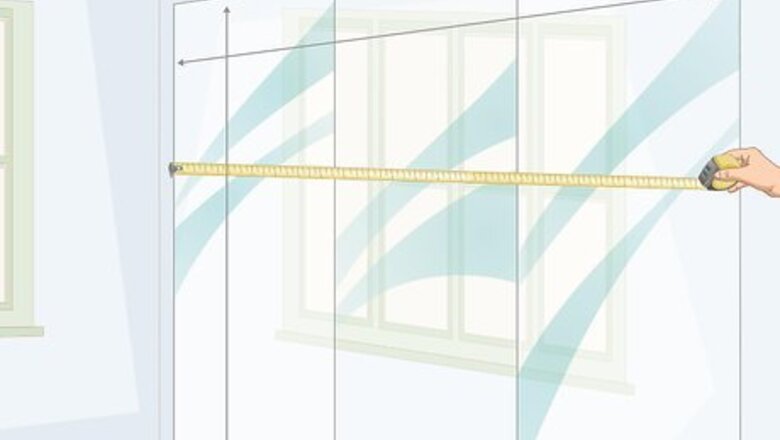
views
Hanging Curtains in Front of the Wall

Measure the height and length of each mirror. Use a tape measure and get the dimensions of the mirror. Write these measurements down and bring them to the store with you so you get the right-sized curtains. Remember to measure each mirrored wall that you have to cover. This method works whether the mirrors extend from floor to ceiling, or only cover a portion of the wall.

Get a curtain rod and curtains that match your mirror’s dimensions. Take your measurements to a hardware or interior design store and find a curtain rod long enough to stretch across the mirror. Then get curtains the correct length and height to hide the walls. If you’re covering multiple mirrors, get a curtain rod and curtain for each one. There are also adjustable curtain rod designs. Consider trying one of these if you can’t find a rod exactly the right length. There are many curtain choices that use different fabrics, colors, and designs. Choose curtains that match the décor and style of your room.
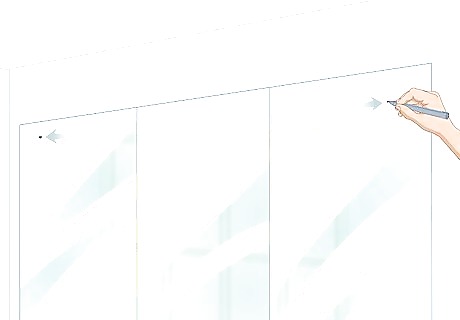
Mark 2 spots on the wall for adhesive hooks. Hanging curtains with adhesive hooks is the best choice for mirrored walls because you can’t drill holes into mirrors. Start at one top corner and measure 6 inches (15 cm) in from the side and 3 inches (7.6 cm) down from the top. Mark the point with a marker or a piece of tape. Then repeat the same measurements from the other corner. If the mirror leaves some of the wall exposed, you can still use adhesive hooks to avoid putting holes in the wall. If you prefer a more secure curtain rod, then screw hooks into the exposed wall.
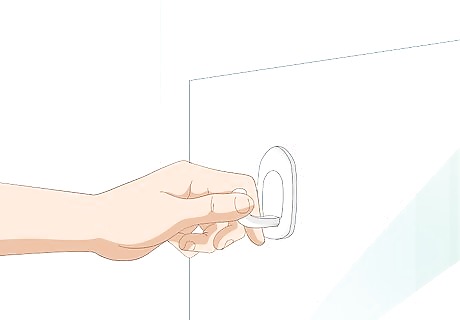
Attach the adhesive hooks to the wall. Adhesive hooks come with a sticky strip, a wall attachment, and a hook. Take the sticky strip and find the side that says “Wall.” This side attaches to the mirror. Peel off the paper on the opposite side and stick it onto the wall attachment. Then peel off the paper on the “Wall” side and press it against the point you marked on the mirror. Hold it for 30 seconds. Then take the hook and slide it into the notch on the wall attachment. Repeat this same process for the hook on the opposite side of the mirror. Remember to get adhesive hooks designed for curtain use. Regular ones may be too small to hold a curtain rod. Some adhesive hook brands have different attachment methods. Check the instructions on any product you use to confirm the right method.
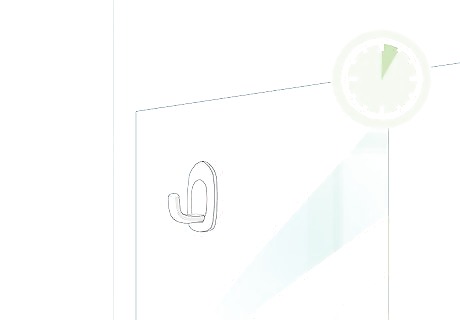
Wait 1 hour for the hooks to stick. Let the adhesive bond to the mirror. If a hook falls off, rub the area on the mirror with alcohol and re-attach it. If it still won’t stick, you may have a defective adhesive strip.
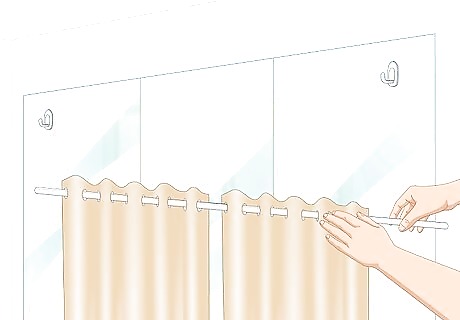
Loop the curtains onto the curtain rod. While you wait for the hooks to adhere, attach the curtains to the rod. Most curtains have holes on the top. Insert the rod through each hole. Double check to make sure you inserted the rod into every hole. If you missed any, the curtain will sag.
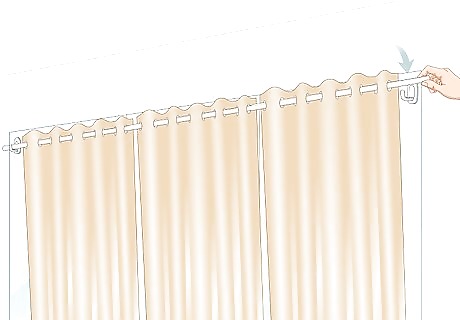
Hang the rod onto the hooks. If you have a partner to work with, have them hold the rod on the opposite end from you. Then both of you lift and tuck the rod into the hooks. If you’re alone, hold the rod by the middle and lift it up. Tilt one side up and tuck it into one hook, then lift the other side into the hook. Then spread out the curtains so they cover the mirror. Repeat this same installation process for each mirror you want to cover.
Using Temporary Wallpaper
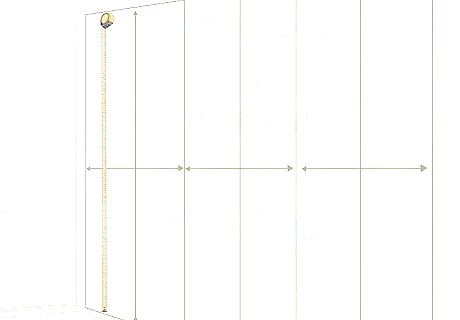
Find the area of all the mirrors you’re covering. Temporary wallpaper comes in sheets or rolls that cover a specific surface area. Measure the height and length of each mirror. Then multiply those 2 numbers together to get the area of the mirror. If you're covering multiple walls, calculate the area of each and then add the result together. For example, if you're covering a wall that's 8 feet (2.4 m) long and 6 feet (1.8 m) high, the area is 48 square feet (4.5 m). If you have 2 walls the same size, the total area to cover is 96 square feet (8.9 m).
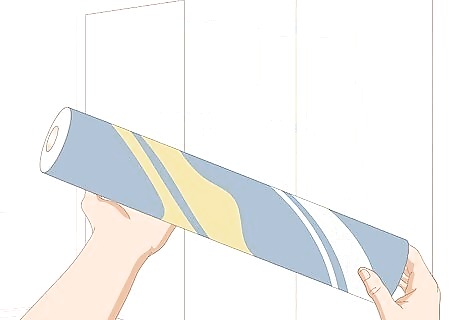
Buy or order enough temporary wallpaper to cover your mirrors. Temporary wallpaper comes in pre-made rolls with a sticky backing. It’s essentially a large sticker. Visit a design store or website to order the correct amount of wallpaper to cover the area of your mirrors. Check the area that a roll of wallpaper covers. You may need multiple rolls if you’re covering a large area. Temporary wallpaper comes in many different designs. Choose a style that appeals to you and fits the décor of your room. Sometimes temporary wallpaper can be custom made to your specifications. If you have a small area to cover, you may be able to order one sheet made to those dimensions.
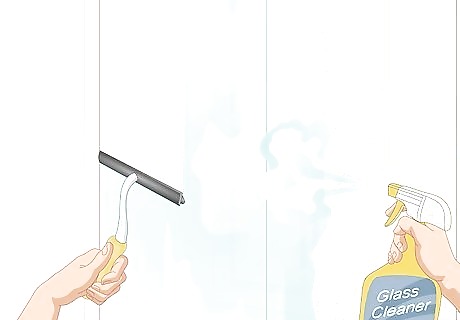
Wipe the glass with glass cleaner. Make sure the mirror is completely clean before working on it. Spray it with glass cleaner and wipe it down with a clean rag. Let all of the moisture evaporate so the mirror is dry.
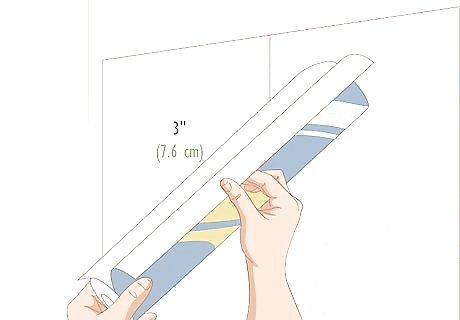
Peel off the top 3 inches (7.6 cm) of the wallpaper backing. Don’t peel off the whole backing at once. This makes installation very difficult. Just pull off 3 inches (7.6 cm) at a time. Then when you’ve stuck some wallpaper to the mirror, remove a bit more backing. Working with a partner makes this job much easier. One of you can pull the backing off while the other presses the wallpaper down.
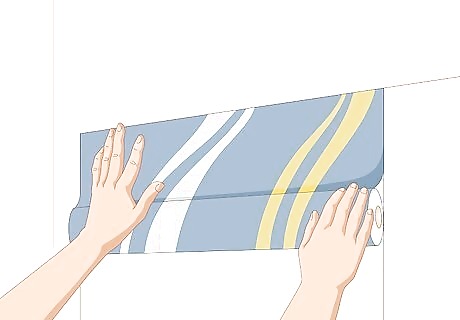
Press the wallpaper down starting in the top corner of the mirror. Line up the top corner of the wallpaper with the top corner of the mirror. Make sure both the top and side edges are even with each other. When the corners are lined up, press down on the wallpaper and stick it to the mirror. Run your hand across the wallpaper and apply smooth pressure to work out any air bubbles. Don’t press down until the edges are lined up. If you peel the wallpaper off after making a mistake, it won’t stick as well. Stand on a step stool if you can't reach the top of the mirror.
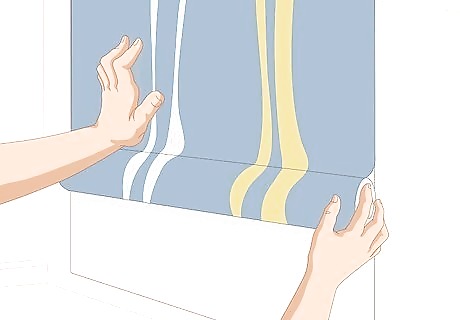
Peel off more backing and press the wallpaper down. Once the top is in place, work down the mirror gradually. Peel off 3 inches (7.6 cm) more backing and press the wallpaper down. Keep working down the mirror in small increments like this until you reach the bottom. Use a wallpaper brush or squeegee to smooth out the wallpaper. Press down with even pressure against the wallpaper surface. Don’t rush. If you work too fast, your wallpaper could be uneven. Remember that working with a partner makes this job much easier. You can press down the wallpaper while your partner removes the backing, or vice versa.

Cut the bottom in a straight line if there is excess wallpaper. If you’re working with a roll of wallpaper, then there will be excess leftover when you reach the bottom of the mirror. Use scissors to cut away leftover wallpaper the bottom. Be sure to cut in a straight line. If there is still some coming off at the bottom, snip along the bottom of the mirror to remove it. Even if you ordered a custom-sized wallpaper roll, there might be a bit sticking off the side. Use scissors to trim it away.
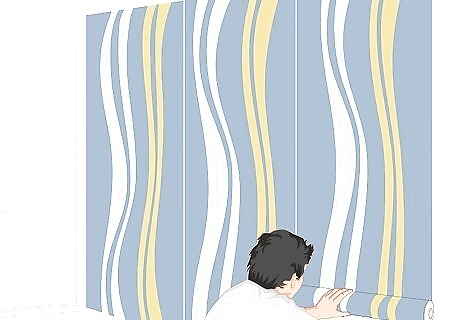
Repeat the process across the whole mirror. After completing this first row, move over and work on the rest of the mirror. Unroll a bit more wallpaper and line it up with the top edge and the edge of the first sheet. Remove 3 inches (7.6 cm) of backing and press it down, working down the mirror like before. Work across the mirror until you cover the whole thing. It’s okay if the wallpaper overlaps a little bit, but try to minimize the overlap. If the wallpaper has a specific design, use it to keep the sheets even with each other. For example, a line pattern might repeat multiple times on each wallpaper roll. Line up the pattern when you lay down the next sheet to keep the wallpaper straight. Temporary wallpaper is completely removable, so if you don’t like the results, just peel it off.
Painting Over the Mirror
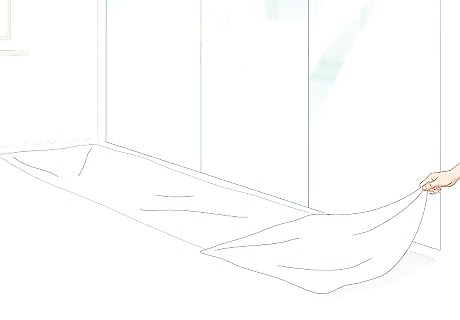
Lay drop cloths underneath the mirror. Painting is always a messy job, so protect your floors. Lay a drop cloth underneath all the mirrors you'll be working on. Plastic sheets will work as well.
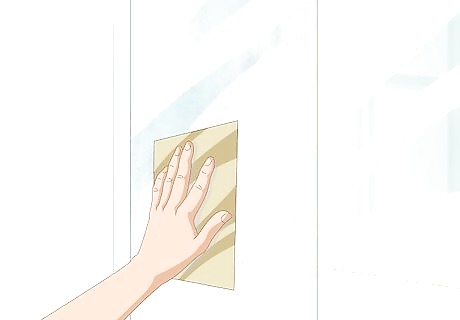
Sand the mirror with a fine-grain sandpaper. This roughs up the mirror surface so paint can stick better. Sand over the whole mirror surface with light, even pressure. Don’t try to sand hard and make the whole mirror rough. Just a light sanding works fine. For an easier job, tape the sandpaper to a paint roller. Then roll it over the mirror to sand it faster.

Clean the glass off with glass cleaner. Sanding may leave some dust or residue behind. Before you paint the mirror, make sure it’s completely clean. Spray it with glass cleaner and wipe it down with a clean rag. Let all of the moisture evaporate so the mirror is dry. If you don’t have glass cleaner, a damp rag will also pick up sanding residue.
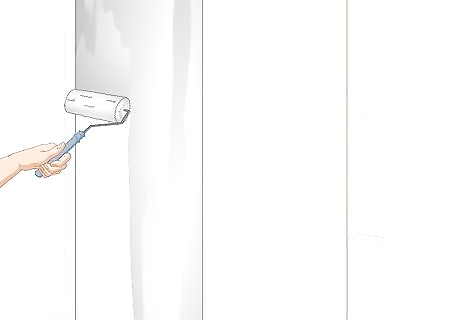
Apply a primer designed for glass to the mirror. Go to the hardware store and buy a primer designed to stick on glass. Pour some into a paint tray and wet a roller. Then roll an even coat of primer out. Use an up and down motion to lay a line of primer from the bottom to the top of the mirror. When you finish start a new line, overlap the previous line by half to ensure you get good coverage. Keep working until you cover the whole mirror. Roll the primer out with even pressure, but don't press hard. Pressing too hard leaves lines on each side of the roller. If you see lines forming, lighten the pressure. Don’t let the primer drip or pool. Rub away any drips to smooth the surface out. Remember to prime all of the mirrors you’re covering.
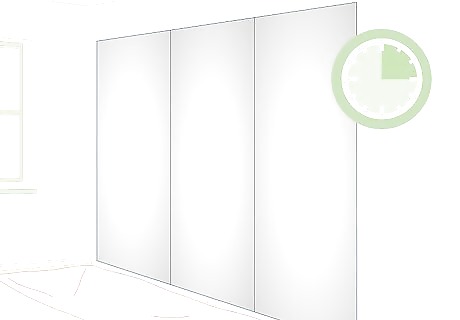
Let the primer dry for at least 3 hours. The primer needs enough time to dry so it binds to the glass. Drying time varies, but give the primer at least 3 hours before you paint over it. If you don’t have another roller and paint tray, clean the tools you used so the paint doesn’t mix with primer.
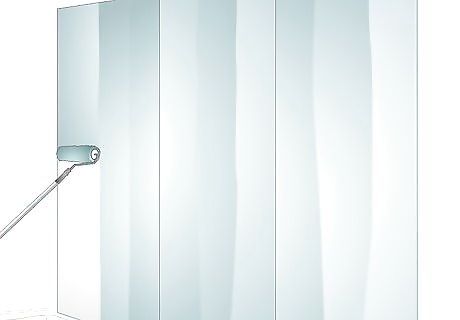
Cover the mirror with enamel glass paint. Enamel paints are designed to adhere to glass. Pour some out into a clean paint tray and dip your roller in. Then apply the paint with the same motion and pressure you used to roll the primer on. Work bottom to top and roll a line of paint on the mirror. When you start a new line, overlap the previous line halfway. Remember to use light pressure. If you see lines forming, use less pressure. Work down the mirror until it's fully covered. Paint over every mirror and let the paint dry for 24 hours. The paint may dry sooner, but wait at least 24 hours before adding a final coat. Enamel paint is available from hardware or craft stores. Acrylic paint will also stick to glass, but it is often see-through, so it’s not a good choice to cover the whole mirror with. It’s usually used for smaller arts and crafts projects. Use it if you want to make smaller designs on the mirror rather than covering it entirely.
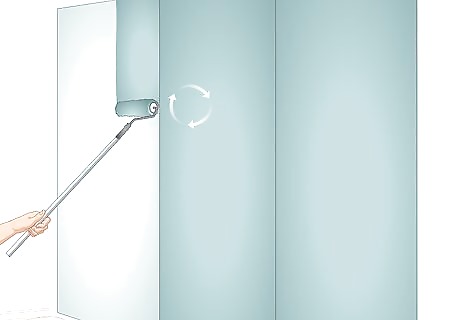
Complete the job with a second coat of paint. After 24 hours have passed, apply a final coat of paint with the same motions you used before. Allow another 24 hours for the topcoat to dry completely and then enjoy your new paint job. Remember that mirrors are under this paint. Don’t forget and try to hammer any nails into the wall.



















Comments
0 comment